13 Creative Ways To Cook Steak Indoors
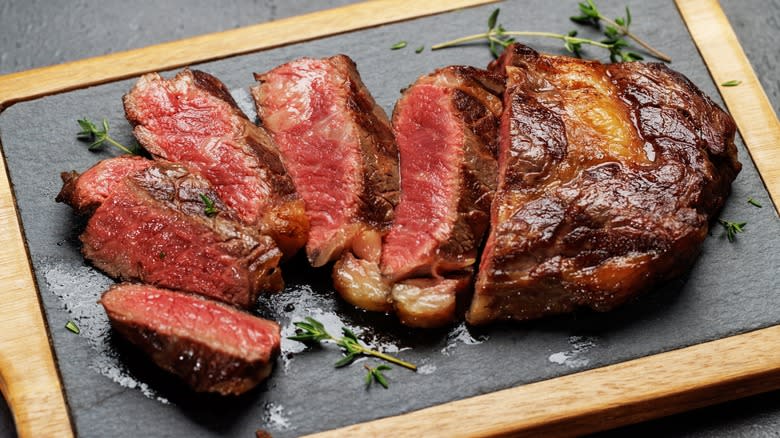
For steak lovers, an excellent steak is a joy. But achieving a perfectly seared, juicy, and tender on-the-inside steak that's the exact color you wanted can be a challenge even for seasoned cooks. While a charcoal grill may be the first thing that pops to mind for steaks, mastering steak in your kitchen opens a world of convenience, consistency, and flavor. Anyone who can make superb steak in their kitchen has no worries about the weather, how much charcoal is left, or if there's a spare tank for the gas grill.
We find that making steak indoors allows more control over the temperature than grilling, which makes it easier to learn how long a steak should cook for juicy medium-rare or to get it barely pink yet not leathery. If you think the only way to make steak in the kitchen is in the frying pan, you can read on for tips to bring the sizzle into the kitchen. Even if you've pan-seared a hundred steaks, you may find we have some tricks for you, and once you know how easy it is to make mouthwatering steaks inside, you can enjoy it any day of the year.
Read more: Cuts Of Steak, Ranked Worst To Best
The Classic Method: A Cast Iron Skillet
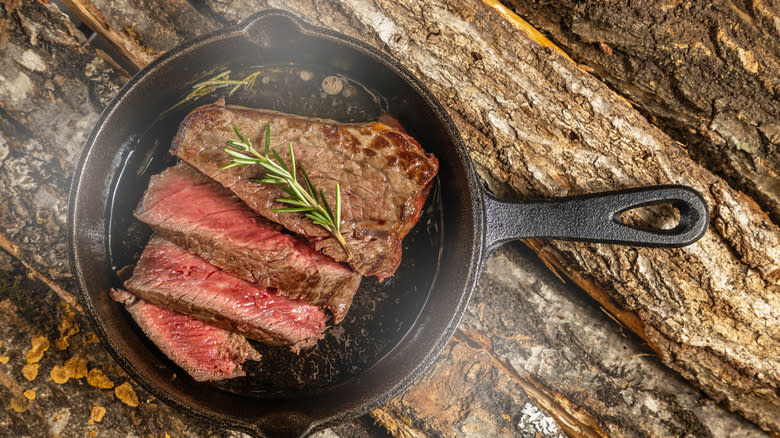
There's a reason your grandma and celebrity chefs make steak in a cast iron skillet—it produces a fantastic meal in minutes. With just a few tips, a tender, juicy steak with a perfect sear and caramelization on the outside is elementary. Cast iron pans work best when preheated; they retain heat beautifully, but if a steak goes into a cold pan, it will sort of bubble miserably instead of developing that perfect brown crust we crave. Think low and slow—let the pan heat for up to ten minutes over low-medium heat, resulting in a screaming hot pan for an impeccable sear.
Like the pan, the steak shouldn't be cold; pat it dry and let it sit out for about 30 minutes before you cook it. Seasoning it before cooking allows the flavors to penetrate the meat, but a good steak doesn't need a million spices; salt and pepper will suffice unless you want to get a bit fancy. A bit of oil keeps the steak from sticking, but never move it around, or the crust won't develop. Flipping only once is the goal; depending on its thickness and desired doneness, it only needs 3-5 minutes per side. Finally, once the steak is cooked how you want it, let it rest. It's tempting to dig in right away, but let it sit about as long as you cooked it for the best steak experience.
Try A Reverse Sear For An Excellent Crust
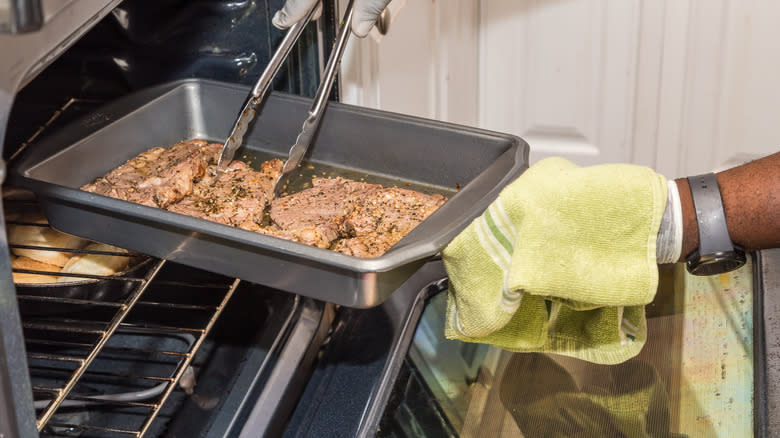
The reverse sear method may be unknown to many folks; it goes against conventional wisdom when cooking steak. Commonly, we learn to sear the steak over high heat, whether on a grill or stovetop, because doing so locks in the flavor and forms the delectable crisp brown crust. While this method makes sense and delivers steak to your plate in a few minutes, an excellent steak sometimes feels like a challenge: Sometimes it turns out perfectly, and other times, you inexplicably overcook it and end up with a disappointing meal.
Enter the reverse sear, where the steak cooks slowly in a low oven (200-275 degrees Fahrenheit) until its internal temperature reads about 15 degrees under your desired doneness. Then it's time for the screaming hot cast iron skillet to sear that baby so it looks and tastes exactly how a superb steak should. Why does it matter? Chef Andrew Zimmern prefers the reverse searing method to cook the meat evenly and make it unbelievably tender and juicy. Additionally, the oven's heat dries the steak's surface better than patting it dry with a paper towel, the conventional method, before a sear. The dry steak hits the pan and immediately forms an incredible crust. We recommend trying this method the next time you make steak indoors -- you may never return to the grill.
Braising Makes A Budget-Friendly Meal
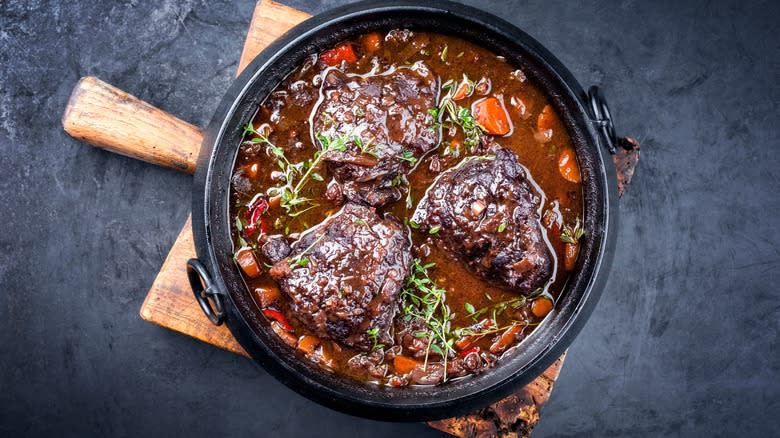
If you've ever stared at a butcher case full of steaks and wondered which to choose, you aren't alone. It can be confusing to decide whether to buy ribeye or sirloin, flank or strip, and the price tags might make you toss your hands up and avoid the decision altogether. Generally speaking, great steaks have plenty of fat marbling and a deep red color (avoid any that look oxidized or super wet since they could be slimy), but to add to the confusion, filet mignon is always delicious but doesn't have a lot of marbling.
In an ideal world, we could all buy the best steaks whenever we felt like it, but in the real world, we might buy whichever steak is on sale. If you purchase a steak that you later discover will rival a strip of old tire, there's no need to despair. The good news is that simmering a tougher cut of steak in stock, wine, or even balsamic vinegar tenderizes the meat and turns it into comfort food with little effort. Braising does take longer than other cooking methods; by definition, it's a low and slow method, but after setting it in the oven, you can relax until it's time to dig in.
A Wok Makes Steak Dishes Simple
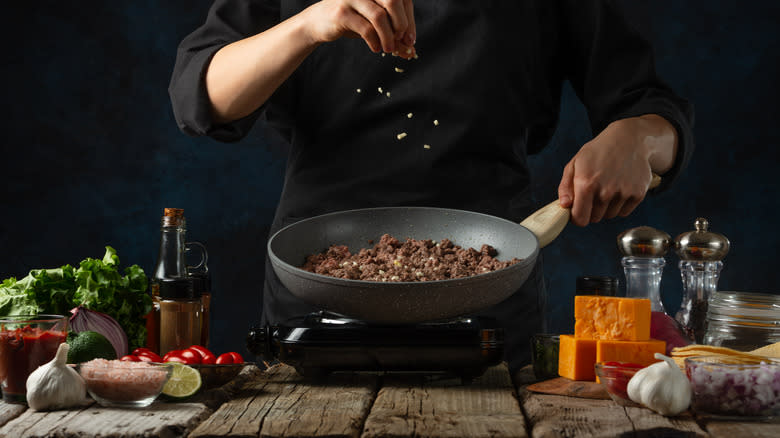
A perfectly cooked steak with a baked potato and a salad is a fantastic meal, but forgetting that steak works in many recipes is a mistake. By making sliced steak recipes, you can stretch your food budget while limiting the amount of red meat on each plate, a resounding win for your diet and your wallet. Designed to distribute heat efficiently, a wok is the simplest way to sear steak quickly and keep it tender and juicy. Although stir-fries leap to mind when we think of wok cooking, making steak for fajitas, sandwiches, or top salads is best with a wok.
Cooking in a wok is quick and easy, but there are a few essential guidelines to remember. You don't need a lot of oil since woks become naturally nonstick with repeated use, but you should always use one with a high smoke point to avoid smoke detector disasters. Peanut, canola, or avocado oils are solid choices -- leave the olive oil on the shelf. Always pat the steak slices dry with a paper towel so that the meat sears and doesn't steam, and be sure not to stir fry for more than a few moments if you aren't a fan of chewing rubber.
Crock Pots Are Perfect For Jam-Packed Schedules
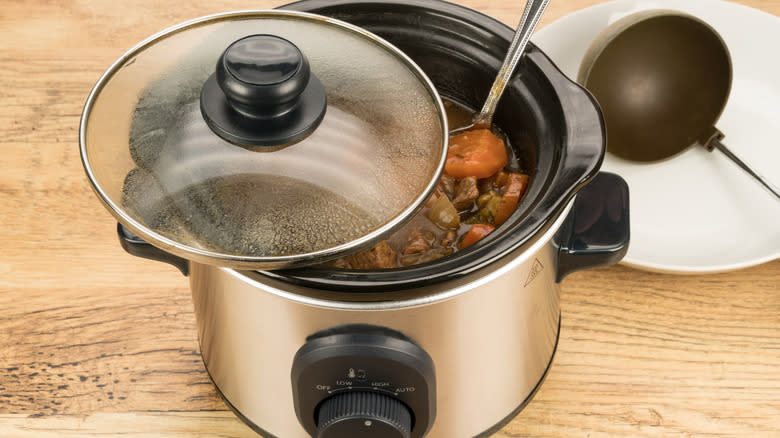
We know some folks hate slow cookers, but even they have to admit there are days when they come in handy. Who can argue with tossing a few ingredients together and heading out for the day? Even if you're home, having a hot meal ready to go when you want it is priceless. Certain steaks are tailor-made for the crock pot, especially cube steak, which makes a comforting meal on a budget and is also a meal prep dream since one slow cooker can hold an impressive amount.
Surprisingly, you aren't limited to tougher cuts: You can use a slow cooker on almost any steak, according to The Chicago Steak Company. They recommend using thicker cuts with some fat marbling and always searing the meat before it goes into the slow cooker. It's also important to avoid common mistakes when using a slow cooker, like lifting the lid and overdoing the liquids in the recipe -- trust us, as it cooks, its juices will be plenty. During hot summer weather, slow cookers are the bomb; they add no extra heat to the kitchen, and you won't be sweating over the grill. In fact, you can have a cocktail hour on the deck instead of spending your time making dinner, which sounds like summer to us.
Use The Broiler For Restaurant-Quality Steaks
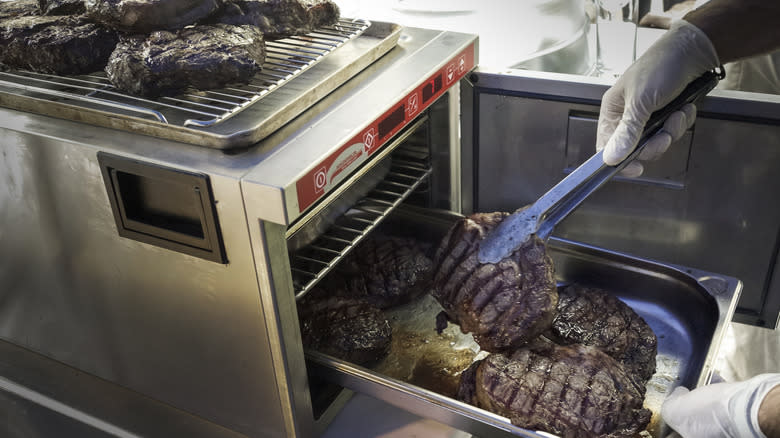
Don't overlook broiling when cooking steak indoors. Every oven has a broiler, although its location depends on your oven model. It may use a section of the main oven or a broiler compartment underneath; gas ovens use an open flame, while electric ovens have coils. Either way, broiling steak is closest to grilling because the temperature is so high, usually about 550 degrees Fahrenheit. Unlike baking, where heat is evenly conducted around the food, broiling concentrates the heat directly over the food.
Like other steak-making methods, a light brushing of oil (high smoke point oils are best) and some seasoning are all you need for a perfectly broiled steak. One note of caution: You can broil any steak, but make sure it isn't too thick. The heating element is very close to the meat, so the thicker it is, the more likely you are to burn it, and nobody wants that. Depending on its size and how you like your steak, you can flip it after only three minutes, though a meat thermometer will let you know for sure (medium steak is 140 degrees). As always, let the steak rest before cutting into it, and when you do, slice it against the grain so that it's tender and easy to chew.
The Instant Pot Makes It Fast
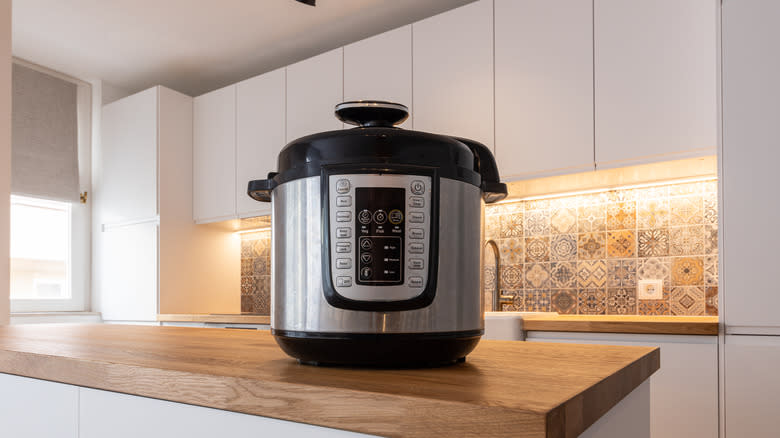
The Instant Pot hasn't been around for long, yet we wonder how we lived without one. Yes, pressure cookers have been around a while, probably far longer than you thought (the first pressure cooker hailed from France in 1679)—but the Instant Pot isn't just a pressure cooker. While a pressure cooker forces steam through food to cook it, the Instant Pot is a multifunctional tool. Making steak in the Instant Pot is quick and easy and avoids heating your kitchen in hot weather.
While it's true that tough cuts of steak get more tender in the Instant Pot (Swiss steak, anyone?) and that slow-cooked dishes like vaca frita can be whipped up in a jiffy, a conventional steak is no problem either. Season the steak and let it sit for 30 minutes to warm up and absorb the seasonings. After preheating your Instant Pot, add oil and sear the steak, then add a bit of red wine or beef stock to boost flavor and moisture. Add garlic and fresh herbs before setting the cooking time (depending on the thickness, it will only take three to four minutes for medium-rare steak in the Instant Pot), and let the pot do its thing. Let the pressure release before opening the lid, and then let the steak rest before slicing. Making steak in the Instant Pot is a simple way to get consistent results so that you can have a great steak any time.
Your Air Fryer Makes Amazing Steak
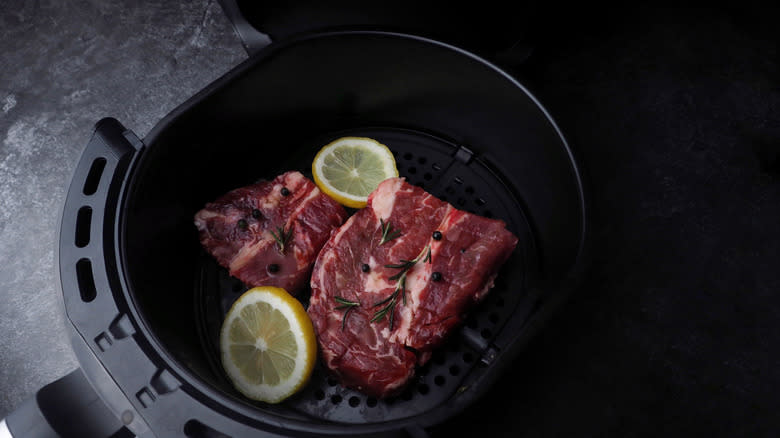
Now that almost everyone has caught on to how fantastic air fryers are, we can add steak to the massive list of foods we love cooking in this mini convection oven. While air fryer cooking takes a little getting used to (each air fryer is different, so sometimes you have to adjust temperatures and cooking times from what a recipe uses), once you know your machine, nothing can stop you but your imagination. From reheating pizza to roasting chickpeas, there's nothing these babies can't do.
Although some cuts of steak work better in the air fryer than others, there are several reasons this is a great way to make steak if you aren't grilling outside. Cooking steak this way requires just a spritz of oil, mitigating some of the less healthy aspects of eating red meat. Forced-air convection cooks the steak evenly and triggers the Maillard reaction for that crispy brown crust that makes a steak satisfying; once you know your air fryer, you can make steak on autopilot. Air fryers don't heat the kitchen and are much less messy than making steak on the stovetop; adding a few tablespoons of water to the bottom of your fryer keeps grease splatters from smoking. The next time you want a great steak in minutes, let your air fryer do the work.
Foil Packets Mean No Cleanup
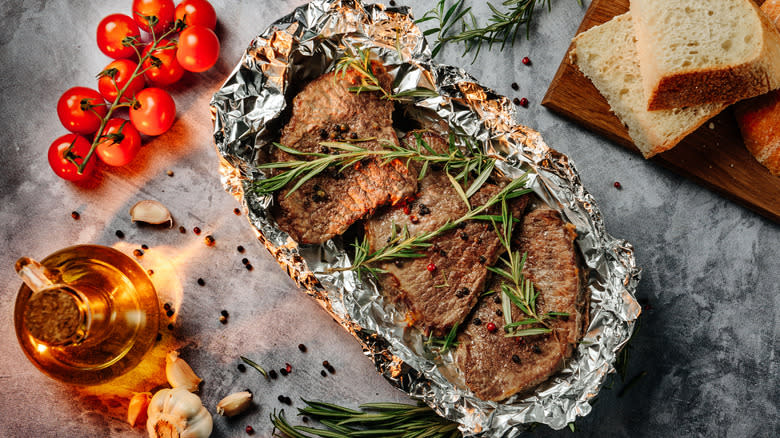
If you love camping or were a Scout as a child, you've probably made "hobo meals," easy all-in-one dinners wrapped in heavy-duty aluminum foil and grilled on a fire pit grate. They're convenient for camping because there are no dishes to wash, and you can customize meals any way you like: using different proteins, vegetables, and seasonings means endless, easy meals. Celebrated chef James Beard wrote a cookbook in 1955 called The Complete Book of Outdoor Cookery, pointing out that foil packet meals mimic traditional cooking methods where food was wrapped in husks, leaves, or seaweed to keep moisture and flavors in.
Making steak in foil packets is as easy as deciding which veggies you'd like with your steak and tossing everything with oil or butter and seasonings. Individual portions go onto aluminum foil, folded closed (think wrapping a gift), and roasted in the oven. Potatoes work beautifully if boiled (cut in quarters) for 10 minutes before roasting to ensure they're cooked through. When the steak is ready, remember the steam and cut a slit in the foil before unfolding the packet to avoid burns. You can let the steak rest at that point, or for more caramelization, put the open packets under the broiler for a minute or two. Enjoy your dinner al fresco or at your table --either way, you'll enjoy having no mess to clean up.
Try Your Iron For Surprisingly Good Results

You've probably heard of a flat iron steak, also known as a top blade, which comes from the shoulder of the cow. However, this isn't what we mean when we talk about making steak with an iron; we mean literally cooking a steak with a clothes iron. This TikTok trend actually works if you use the proper cut of steak, and no, your fancy clothes won't smell like beef or get stained. The best steak for this technique is reasonably thin (no more than ¾ inch thick) and boneless so the iron's heat can reach the entire surface effectively.
A light coating of oil and the seasonings you like is all the prep work you need. Wrapping the steak tightly in aluminum foil keeps the iron clean and conducts its heat right to the steak, so press it onto the steak and let it cook before flipping and cooking the other side. Remember, a thin steak cooks pretty quickly, so to avoid the dreaded shoe leather experience, start with 30-60 seconds per side and check for doneness. Other than doing this purely for the experience, we could see this technique coming in handy during a kitchen renovation.
Encase It In Salt
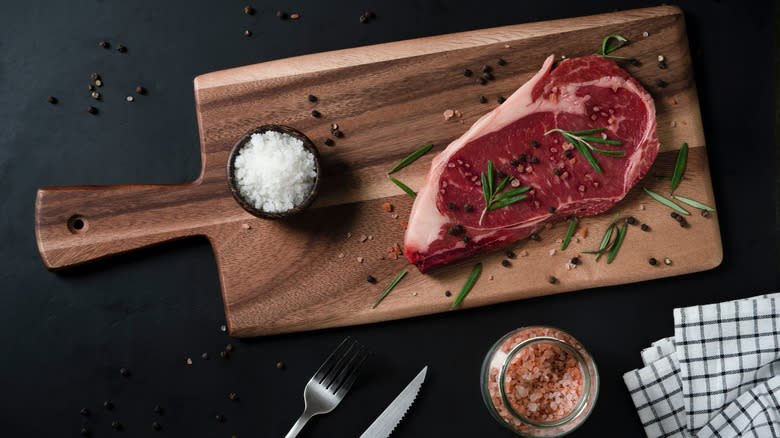
TikTok's cooking tips can be valuable or head-scratchingly nutty. One creator, Jack Mancuso, made waves when he smoked steaks on the grill wholly encased in salt and egg whites. Mancuso seasoned two steaks without any salt before enveloping them in the clay. His reasoning? The salt casing leaves a salty flavor behind to balance the flavors. After smoking the steaks, he cracked open the hardened salt casing and seared them (they looked a bit anemic), pronouncing them delicious and not too salty.
Keep an open mind: High-end steakhouses bake prime rib buried in rock salt. It adds flavor, seals in moisture, and conducts heat so that large slabs of prime rib cook evenly. While most of us don't make prime rib at home, there's no reason not to try it on any thick steak you plan to make. Chef Tyler Florence uses the same salt-and-egg-white crust method in his New York strip steak recipe on Food Network, baking it at 475 degrees Fahrenheit for 15 minutes. The main difference from Mancuso's method on TikTok is that rather than encasing the entire steak, Florence puts the salt clay over the top and sides, leaving its underside in direct contact with the cast iron pan in the oven. This takes away the searing step since one side of the steak browns in the pan -- once you remove the salt crust, flip the steak over and let it rest before slicing.
Grill Pans Give It The Right Look
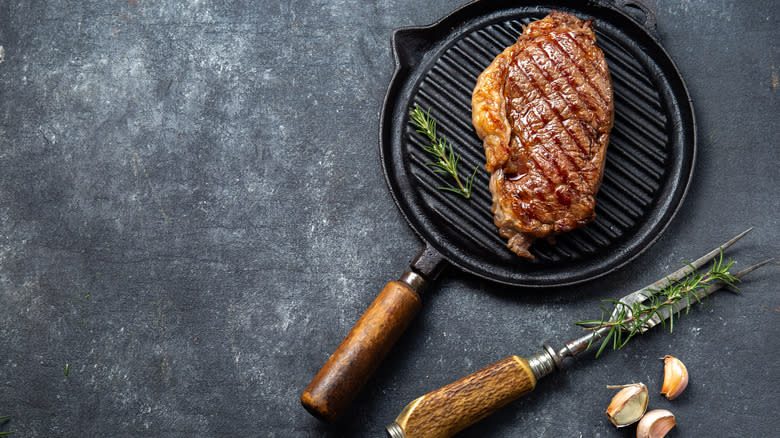
There's no denying that steak grilled over an open flame offers unmatched flavor, but if you don't have time for fuss or the weather isn't cooperating, a grill pan is a convenient way to get the taste and look of a charcoal-grilled steak. Grill pans are often cast iron, so you may wonder, why not just use that cast iron skillet and be done with it? That's certainly an option, but the raised ridges on a grill pan create the coveted char marks that a traditional barbecue puts on the meat and let excess fat drip away, so you get a healthier meal with all the flavor. Cast iron grill pans also distribute heat evenly, so your steak is perfectly done every time.
Using oil on the grill pan helps prevent sticking. It makes the grill marks more noticeable, so even if your pan is well seasoned, we recommend coating the pan lightly with a high smoke point oil (think canola, vegetable, or avocado oil) to avoid flare-ups. If you prefer, brush the steak with oil after patting it dry (you want to sear it quickly, not let it steam.) While using a grill pan may not impart the same smoky flavor as the open flames of your backyard grill, having steak year-round whenever the mood strikes is worth it.
A Tagine Makes Bold, Flavorful Steak Dishes

If you're wondering what a tagine is, you may be interested to know that it's not only the name of a clay dish with a cone-shaped lid, but recipes made in it are called "tagine." Traditionally used as a portable oven in North Africa, they're easy to use in the oven or on the stovetop with a diffuser plate. Another "low and slow" cooking method, tagine is an excellent way to cook tougher cuts of steak as a one-pot meal with all the ingredients and a bit of liquid stacked inside. Steam rises and condenses as the tagine sits over the heat before falling back over the food, keeping everything moist and juicy and caramelizing into rich flavors.
Jamie Oliver makes beef tagine with stew beef, but you can substitute flank steak, skirt steak, eye of round, or top round cut into chunks. Oliver sears the meat to add color and flavor, along with vegetables and a rainbow of herbs and spices, the hallmark of tagine. Think of tagine as less of a recipe and more of a creative outlet -- you can customize the flavors and ingredients to personal tastes and what's on hand, so any time you wonder what to do with a lesser cut of steak, tagine is the way to go.
Read the original article on Mashed

